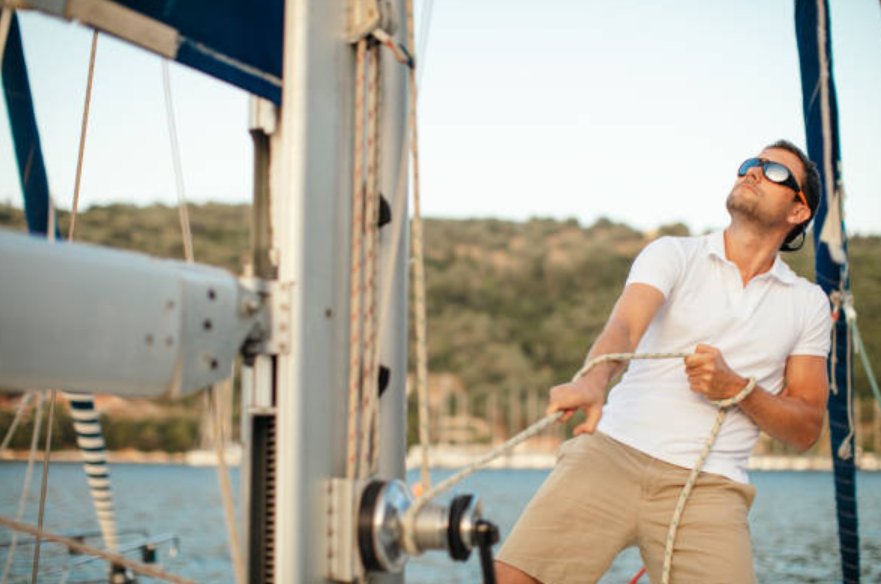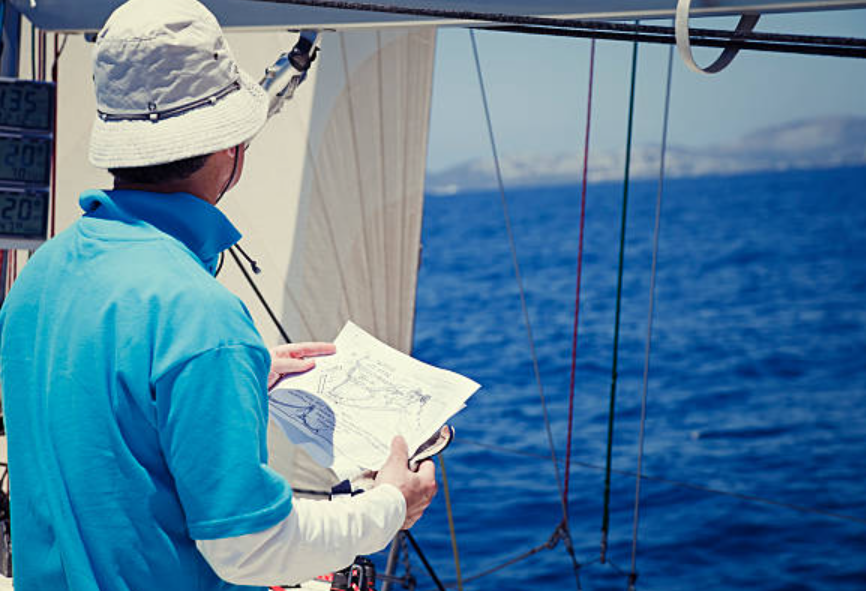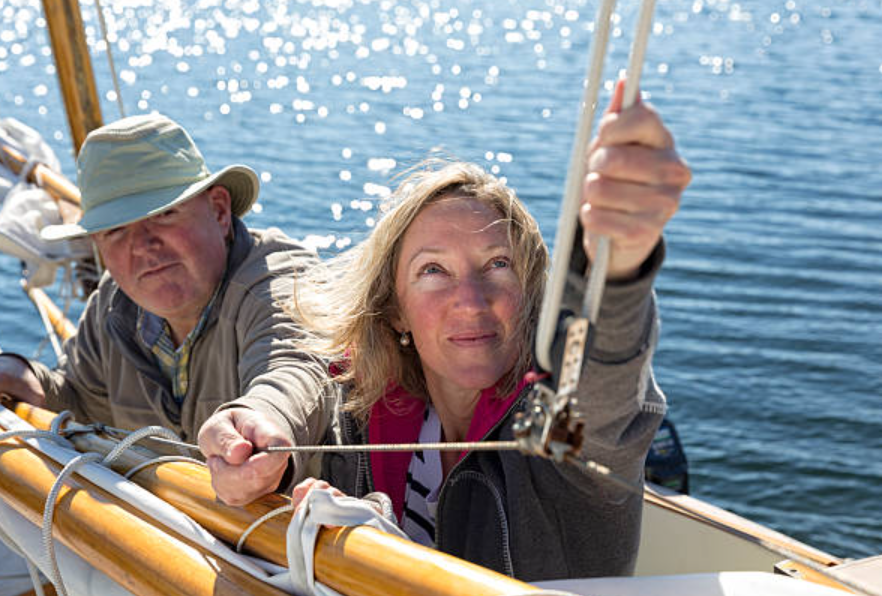Embarking on the journey to buy a sailboat can be as thrilling as setting sail on a new adventure. Did you know that the average sailboat cruises at about 4-6 knots, and some can even reach speeds up to 50 knots? That’s the kind of exhilarating potential waiting for you. But, as you stand on the precipice of this exciting venture, you might find yourself navigating through a sea of questions and uncertainties. From understanding the true cost of ownership to mastering the art of sailing, the challenges are as vast as the ocean itself.
You’re not alone in feeling a bit adrift. Many potential buyers grapple with concerns like affordability, maintenance, and the steep learning curve associated with sailing. It’s easy to feel overwhelmed by the myriad of factors to consider before making such a significant investment.
That’s where this guide comes in. Consider it your compass in the complex world of sailboat buying. With practical advice and insider knowledge, we’ll steer you through the choppy waters, helping you avoid common pitfalls and sail towards a decision that’s right for you. So hoist the sails, and let’s embark on this journey together—you’re about to become the captain of your very own sailboat.
Contents
Understanding Your Needs
Understanding your needs is a pivotal step in the sailboat buying process. It’s about aligning your desires with practicality to ensure your sailing dreams don’t run aground. Let’s navigate through the key considerations that will shape your sailboat buying journey.
Cruising Style
Your cruising style is the keel of your sailboat buying decision. Day sailing is akin to a leisurely picnic on the water; it’s perfect for those who love the sea but prefer the comfort of their bed on land at night. Coastal cruising is the next step up, ideal for weekend warriors seeking to explore the coastline and occasionally brave the open waters. Then there’s bluewater sailing, the ultimate expression of freedom on the seas, where you’re self-sufficient and the horizon is your only boundary.
Number of Crew
The number of crew members you plan to have aboard significantly impacts your choice. Solo sailing offers a profound sense of independence, but it demands a boat that’s manageable single-handedly. Sailing as a couple or with family necessitates a vessel that balances intimacy with personal space. For larger groups, consider a sailboat that can accommodate the dynamics of crew interaction and privacy.
Budget
Setting a realistic budget is more than just accounting for the purchase price; it’s preparing for the voyage of ownership. Maintenance, docking fees, insurance, and the inevitable upgrades all weigh heavily on your finances. Remember, the sea is free, but the lifestyle isn’t.
Sailing Experience
Your level of sailing experience determines the complexity of the sailboat you should consider. Beginners might start with a sturdy and forgiving vessel, while intermediate sailors could take the helm of something that challenges and builds their skills. Experienced sailors, on the other hand, might opt for a vessel that’s as sophisticated as their abilities, ready to tackle the most demanding seas.
By considering these factors, you’re charting a course towards a sailboat that not only meets your dreams but is also a prudent, practical choice for your seafaring adventures. Remember, the best sailboat for you is one that fits your lifestyle both on and off the water.
Sailboat Options

Researching your sailboat options is a crucial step in making an informed decision. Here’s a breakdown of what you need to consider:
Popular Sailboat Types
When it comes to sailboat types, each has its own unique features and benefits:
Keelboats are known for their stability and are often used for offshore sailing. They have a weighted keel, which provides ballast, making them less prone to capsizing.
Catamarans offer more space, stability, and speed due to their dual-hull design. They’re ideal for those who prefer a smoother sail with less heeling.
Daysailers are smaller, more manageable boats perfect for short, day-long trips. They usually lack cabins, but they are great for an easy and quick sailing experience.
Used vs. New Boats
Choosing between a new or used boat involves several considerations:
New boats come with the latest technology, customisation options, and full manufacturer warranties. However, they also come with a higher price tag and significant depreciation in the first few years.
Used boats are more budget-friendly and have already undergone most of their depreciation. They may lack the latest features but can offer good value if well maintained.
Offline Resources
Also, you may want to consider these offline resources:
Boat shows provide an opportunity to see a wide range of boats, meet dealers, and get a feel for different models.
Sailing clubs can offer advice and insights from experienced sailors, as well as opportunities to see boats in action.
Brokers are professionals who can guide you through the buying process, leveraging their knowledge to find a boat that fits your needs.
Remember, the right sailboat for you is one that aligns with your sailing aspirations, crew size, budget, and experience level. Take your time, do your research, and you’ll be on your way to making a wise investment in your sailing future.
Evaluating a Potential Sailboat

Evaluating a potential sailboat is a detailed process that involves inspecting various aspects of the vessel to ensure it meets your needs and expectations. Here’s a comprehensive look at the factors you should consider:
Key Factors
When assessing a sailboat, size matters; it dictates the boat’s comfort, capacity, and handling. The draft determines where you can sail—shallow drafts are great for coastal waters, while deeper drafts are suited for open seas. Displacement affects performance; heavier boats offer stability, lighter ones speed. The construction materials—whether fibreglass, aluminium, or wood—impact the boat’s durability and maintenance requirements.
Interior Layout
The interior layout should provide a balance of comfort and functionality. Evaluate the cabin space for livability during extended trips. Berths should be ample and comfortable for restful sleep. The galley must be functional for meal prep, and storage solutions should be sufficient to stow gear and provisions for your intended use.
Rig and Sails
Different rig types—like the Bermuda rig, gaff rig, and lateen rig—offer various advantages in performance and handling. Sail configurations should match your sailing style; for instance, a sloop rig is versatile, while a ketch may offer easier handling with multiple sails.
Engine and Mechanical Systems
A reliable engine is essential for manoeuvring in harbours and calm conditions. Well-maintained mechanical systems ensure safety and reduce the risk of breakdowns at Sea78. Regular inspections and servicing of these systems are crucial for the longevity and performance of your sailboat.
By thoroughly evaluating these aspects, you can make an informed decision and select a sailboat that will provide you with years of enjoyable sailing experiences. Remember, a sailboat is not just a mode of transportation; it’s a gateway to a unique lifestyle on the water.
Sailboat Buying Process
Navigating the buying process for a sailboat is like plotting a course through uncharted waters. It requires attention to detail and an understanding of the steps involved to ensure a smooth journey to ownership.
Sea Trial
The sea trial is your opportunity to test the sailboat’s seaworthiness. It’s a critical step where you can assess the boat’s handling, performance, and overall condition in its natural environment. Think of it as a test drive on the water; it’s your chance to feel the helm, listen to the engine, and see how the boat behaves under various conditions. Don’t skip this vital step; it’s your firsthand experience of what to expect from your potential new vessel.
Marine Survey
A marine survey is akin to a home inspection, but for boats. Conducted by a professional surveyor, it’s an exhaustive check-up of the sailboat’s structural integrity, safety features, and onboard systems. This survey can uncover hidden problems and is often required by insurance companies and lenders before finalising the purchase. It’s an essential investment that can save you from costly repairs down the line.
Negotiation and Purchase
When it comes to negotiation, knowledge is your best tool. Understand the market value of the sailboat and have a clear idea of your budget. Don’t hesitate to negotiate on the price, especially if the marine survey reveals issues that need fixing. For financing, shop around for the best rates and terms, and be prepared with a substantial down payment to lower your monthly costs.
Insurance and Registration
While insurance may not be mandatory everywhere, it’s a wise choice to protect your investment against accidents, theft, and natural disasters. Registration, however, is typically required and involves proving ownership, paying fees, and ensuring the boat meets local regulations. Both insurance and registration provide peace of mind, allowing you to enjoy your sailboat with confidence.
By meticulously following these steps, you’ll not only acquire a sailboat but also the assurance that you’re making a well-informed and secure investment. Welcome to your new sailing adventure!
Additional Considerations

As you edge closer to making your sailboat purchase, it’s crucial to consider the additional factors that come with boat ownership. Here’s what you need to keep in mind:
Ownership Costs
Owning a sailboat is more than a one-time purchase; it’s a commitment to ongoing expenses. These include mooring fees, which vary depending on location and amenities offered. Regular maintenance and repairs are also part of the package, ensuring your vessel remains seaworthy and retains its value. Expect to budget for these costs annually, as they can amount to a significant portion of your initial investment.
Safety Equipment
Safety should be your top priority on the water. The essential gear includes life jackets, fire extinguishers, visual distress signals, and sound-producing devices. Regulations may vary based on where you plan to cruise, so it’s important to familiarise yourself with the requirements for your chosen sailing zone.
Learning Resources
Whether you’re a novice or looking to polish your skills, there are plenty of learning resources available. Consider enrolling in sailing courses offered by local clubs or organizations. Online tutorials and sailing communities can also provide valuable knowledge and support as you develop your sailing abilities.
Conclusion
Buying a sailboat is a significant decision that can lead to a lifetime of adventures on the high seas. It’s a journey that requires careful consideration, from understanding the full spectrum of ownership costs to ensuring your safety with the right equipment.
Embrace the learning process, as it will enhance your sailing experience and help you join a community of like-minded enthusiasts. Remember, the right sailboat isn’t just about the specs—it’s about finding a vessel that resonates with your spirit and lifestyle. May the winds be ever in your favour as you set sail on this exciting endeavor. Happy sailing! 🌊⛵
